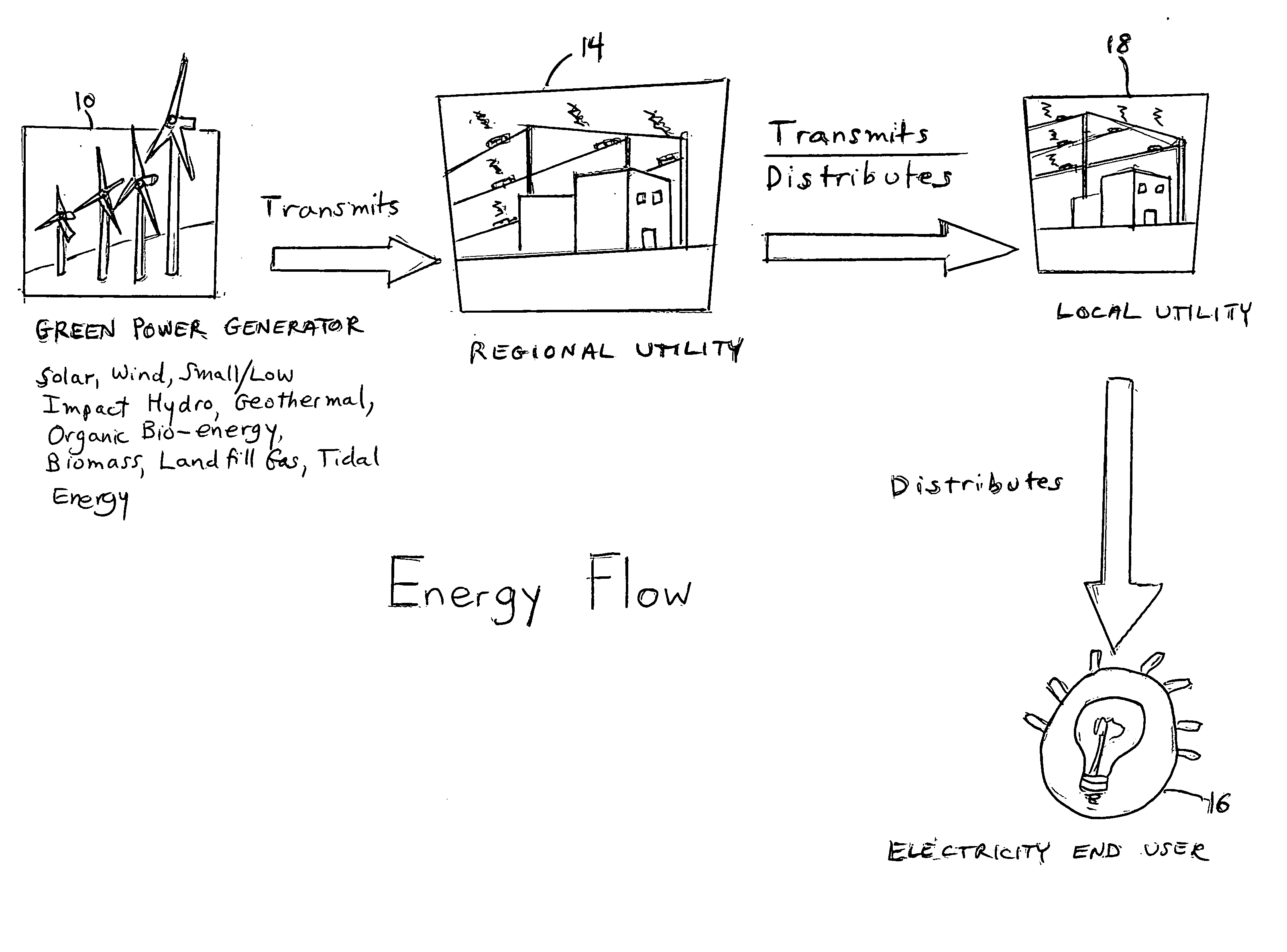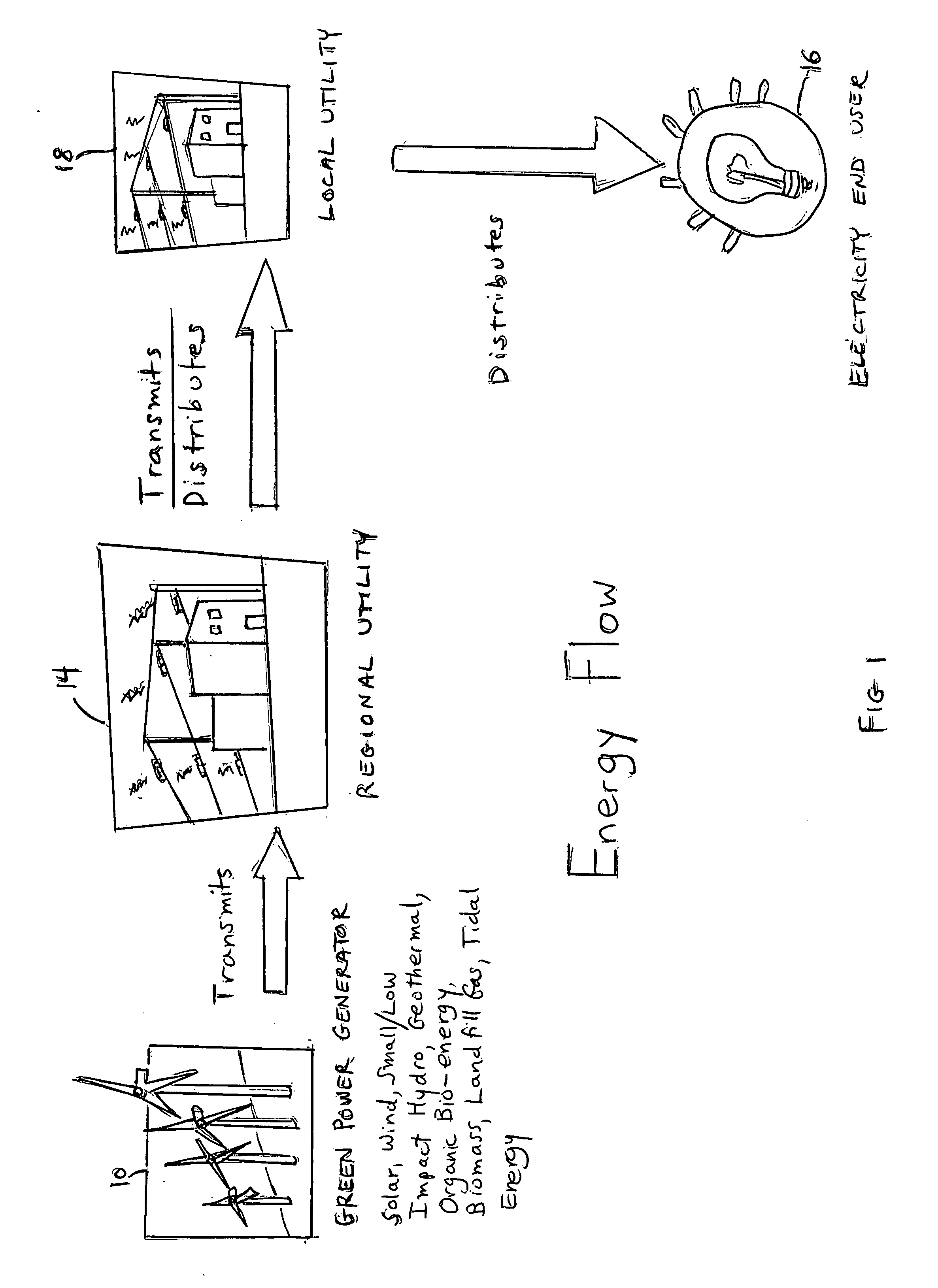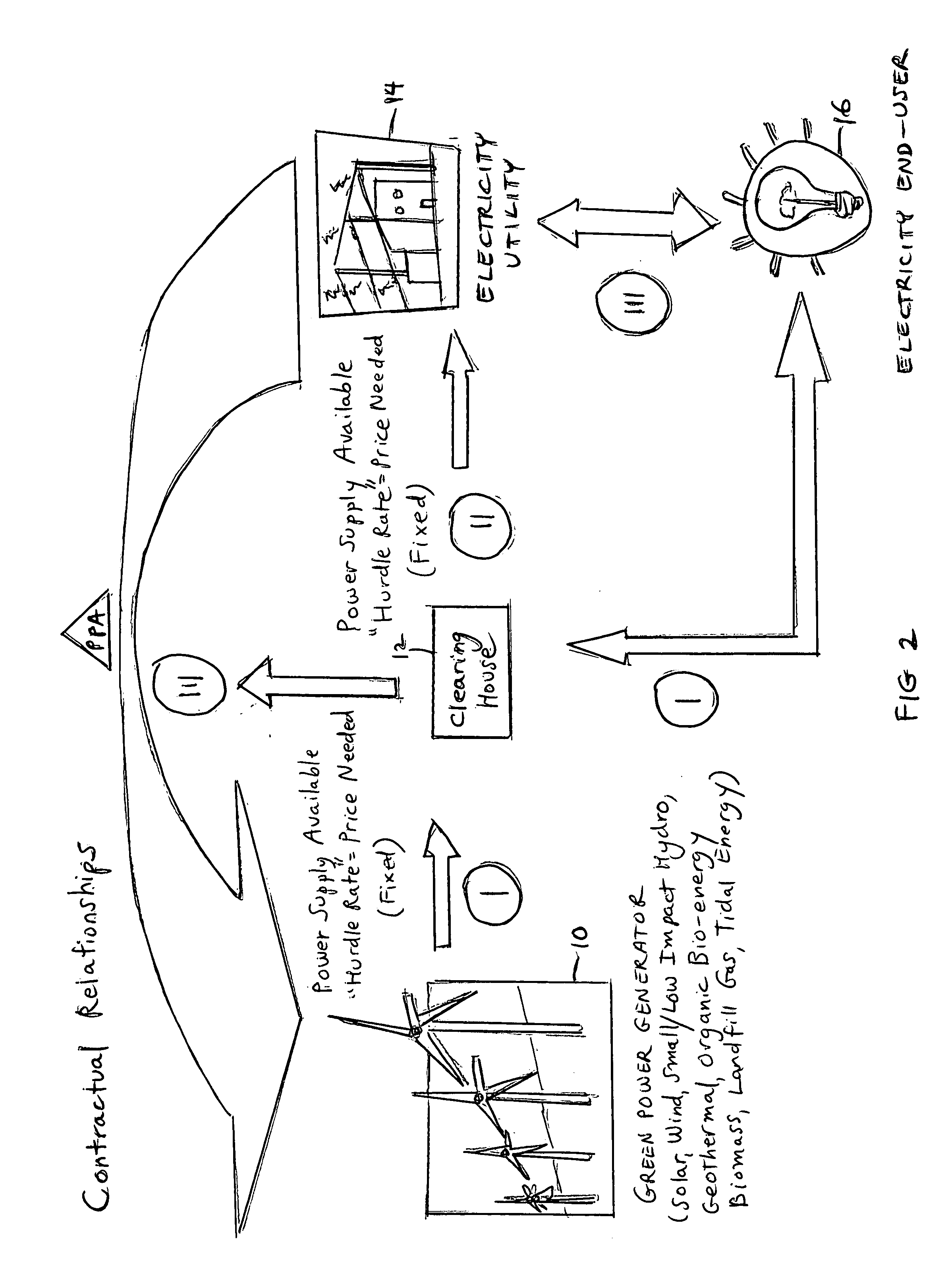[0006] The deficiencies of the prior art are overcome by a method for providing cost effective processes to use renewable energy sources such as solar, wind, small / low-
impact hydroelectric energy,
geothermal energy, organic
bioenergy,
biomass energy,
landfill gas and tidal energy. Since various end users of electricity would like to utilize an “
environmentally friendly” electricity supplier, various energy distributors, such as national, regional and local utilities would like to promote the fact that they use at least some renewable energy sources. One manner to advertise this use would be to acquire a renewable energy
certificate (REC). The REC represents all of the environmental attributes which are created when electricity is generated using renewable resources instead of using fossil fuel sources such as
coal,
oil and natural gas. A purchaser, such as a company, an utility, or even an electricity end-user would acquire the REC, also commonly known as a “green tag”. An entity, such as a clearing house would identify and track
green power generators as well as these marketable RECs. This information would be provided on a computer, thereby allowing the entity to be cognizant of all of the generated RECs whether they are currently on the market or not. In many instances, a regional transmission organization (RTO) or independent
system operation (ISO) would be in possession of a relatively expensive REC. The entity or clearing house would facilitate the RTO or ISO in the purchase of less expensive RECs associated with green energy from a green energy provider located in other areas of the United States where the cost to generate green energy is less expensive, thus enabling the purchaser of the REC to continue to operate as well as market and advertise to the public that the company's energy usage is still “green”, but for less money, thereby “netting down” or reducing the cost for their customers to market their energy usage as green. The national market would receive the regional RECs and return the nation RECs in an equivalent amount of kilowatt hours.
[0009] If, for example, the green energy generator is under performing on a given date, the utility can arrange for the contracted energy requirements of its customers from another source, such as gas or
coal. However, the need to supply end users the more costly commodities will be reduced to a relatively low number of unpredictable days as opposed to the present state which is daily reliance. Experience has shown that the end users, such as the distributors as well as the customers, are comfortable
purchasing their power, whether non-renewable or renewable when they can be assured of an uninterrupted flow of power.
[0011] The present invention would establish a system providing energy to the
end user, such as a
distributor of a customer at a fixed or known cost. This is contradistinction to the traditional method of supplying energy to an
end user at an unknown cost. This fixed cost could conceivably save utilities billions of dollars as well as publicizing the fact that they are
environmentally friendly through the utilization of renewable energy sources. The saved costs would include the cost of hedges, hedge products, reserves and factors of safety to name a few. Once the price of energy / electricity is known, more accurate budgeting, forecasting and better
decision making with respect to maintenance and
purchasing can be made, thereby saving the utilities a considerable amount of money. A decision whether or not to rehabilitate existing equipment or purchase new equipment can easily be made when the price of energy / electricity is known with a high
degree of certainty.
Purchasing decisions regarding the level of quality can be more informed when energy prices are known. Payback will be more accurate, therefore giving companies higher economic returns on their decisions.
[0013] Another embodiment of the present invention would combine the “fixed price” or “essentially fixed price” with the “net down” method as previously explained. This would provide green energy to the end user at a competitive brown energy price. Once the clearing house has gathered all
relevant information regarding the green energy generators, the various utilities, the various RECs that have issued and / or are currently on the market, a computer model would be generated, facilitating the negotiations between the energy producers and the energy distributors. Once the appropriate bundled energy contracts are established, the proceeds from the sale of a relatively expensive REC components of the bundled energy contract can be used to by less expensive RECs, thereby “netting down” the energy costs while still being “green”.
 Login to View More
Login to View More  Login to View More
Login to View More 


